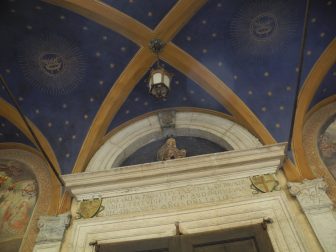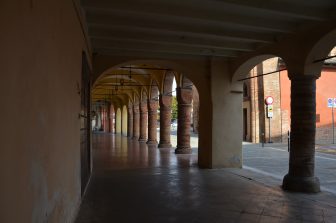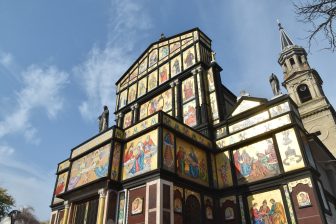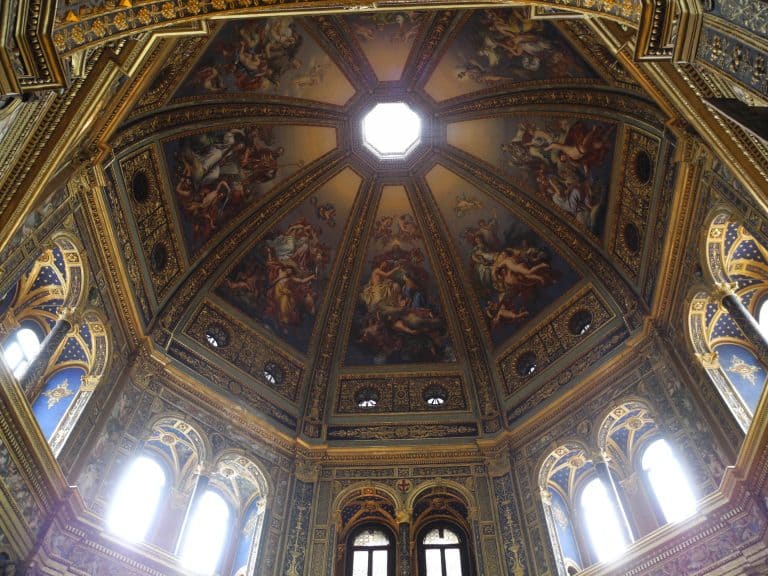
[ Apr.2019 ] The main reason we visited Lodi from Milan, which is about 30km away, was to see the octagon church, called Incoronata Temple.
When we visited another town in Lombardy 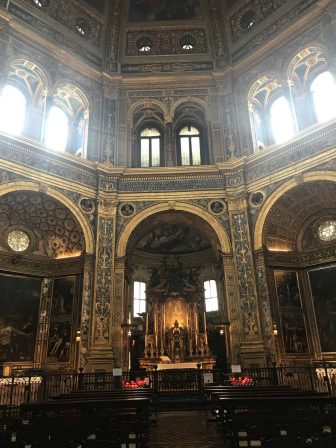
So after visiting the cathedral in Lodi, we looked for this Incoronata Temple.
We did not have a map and had no clue where it was, but when we came out of the cathedral in Piazza della Vittoria, I saw a part of the roof which looked octagon-shaped, so we headed towards that.
But there were no noticeable entrances.
Luckily, I noticed an information board at one point which my husband had passed by and I stopped there.
It just so happened that some people came out of the building and said to me “It is very beautiful. You should get in and have a look”, so I was convinced that this was the one we were looking for.
It really was breathtaking.
There were fresco pictures 
The Incoronata Church in Sabbioneta we had seen had the incredible trompe l’oeil, but here there were no such tricks but it was just so luxurious.
They started building this temple in 1488.
The story of the reason they built it is interesting.
In the past, on this site, there was a brothel.
Everyday, the drunks and prostitutes kept fighting and duelling.
In September 1487, the small fresco picture of the Virgin Mary painted in this brothel in the 14th century started crying and appealed to people to make a church dedicated 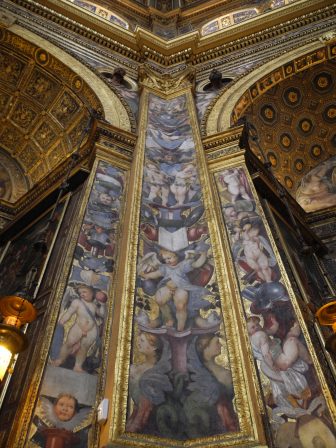
So the local government demolished the brothel and started planning to build a church, which means it was a civil church.
Even now, the temple belongs to the municipality, not the dioceses.
The first stone was laid on the 29th May 1488 and the local architect, Giovanni Battaggio, was commissioned to plan the church.
He was a pupil of Bramante, who introduced Renaissance architecture to the north of Italy.
However, Battaggio was removed after one year in mysterious circumstances.
They think that he might have had a quarrel with the purchasers.
Two engineers succeeded him and kept building the church according to Battaggio’s plan and completed it in 1493.
The fresco Virgin Mary was framed and enshrined in the upper part of the altar.
Currently, this fresco is in the museum in Castello Sforzesco in Milan.
I would like to go and see it one day.
At that moment of the late 15th century, the inner decoration was not yet so gorgeous.
It was decorated later by various artists, for example, a family called Piazza painted the pictures here, taking as long as 30 years from 1529.
The one we were seeing now was the result of the work of the early half of the 19th century, apparently.
I am repeating again, but it is really gorgeous and worth seeing.
I was also impressed by the depth of Italy’s wealth, where this relatively unknown small town of Lodi is hiding this wonderful treasure.
You can see why Italy has got the most World Heritage sites in the world.

